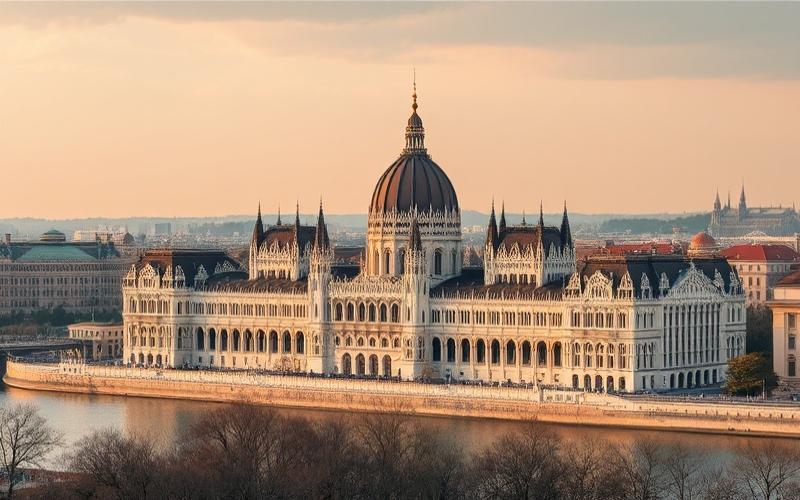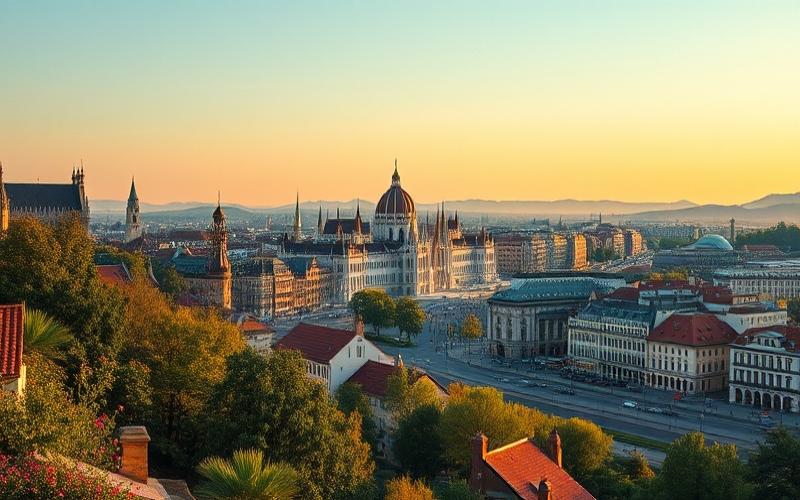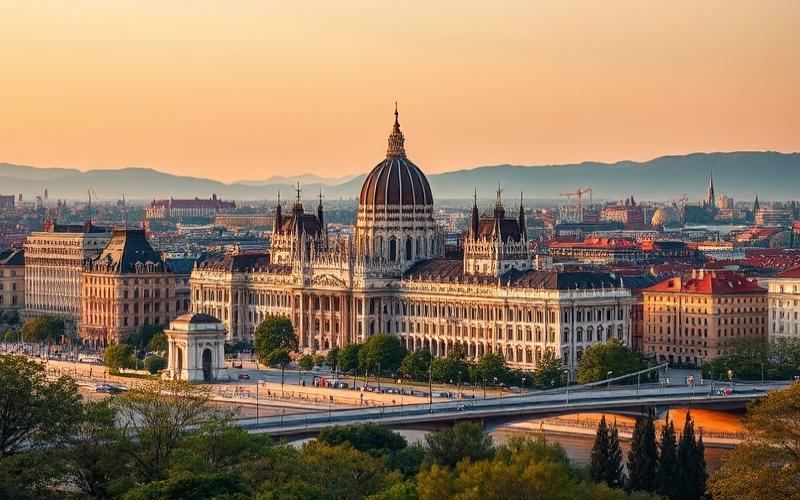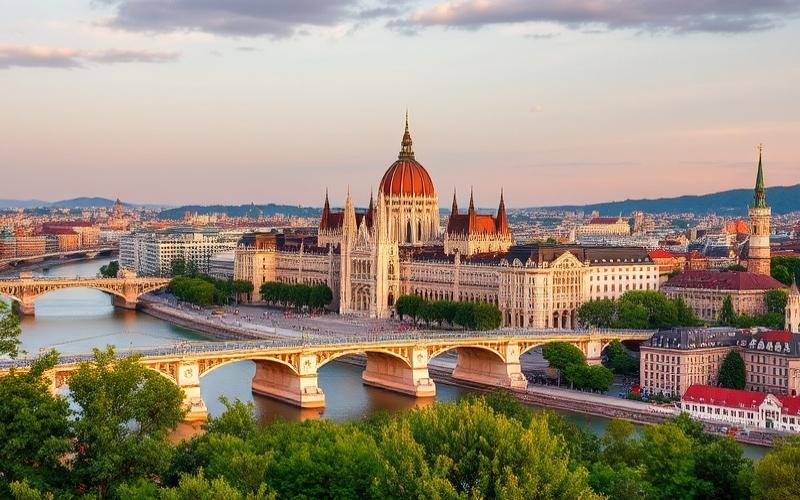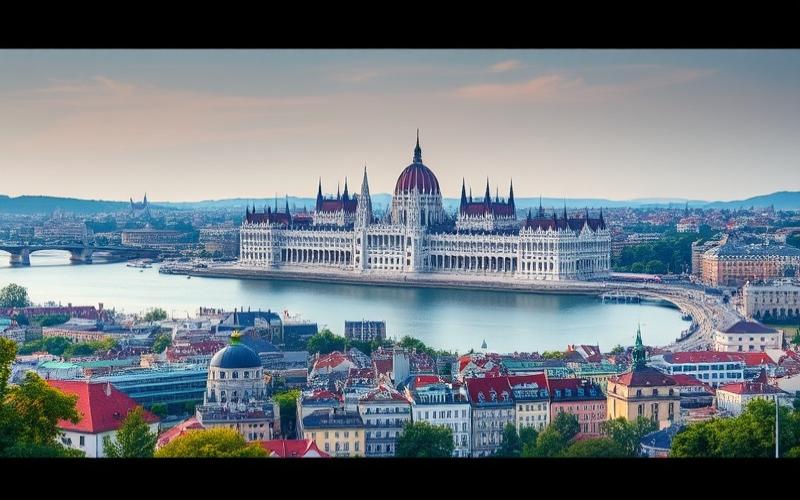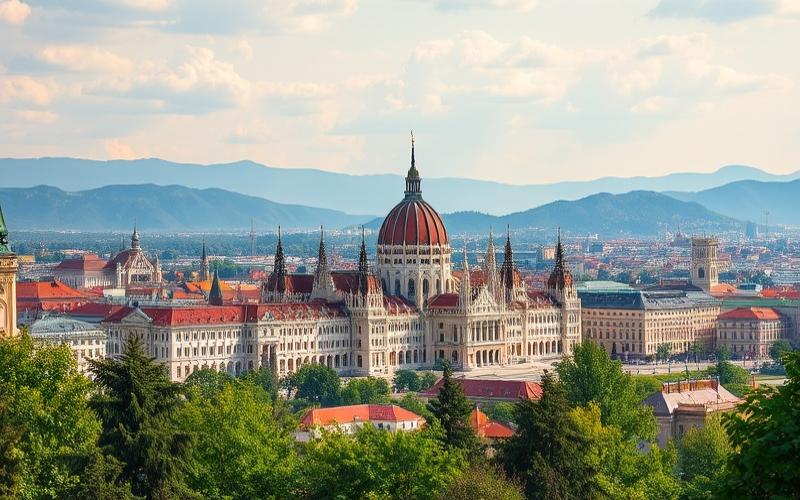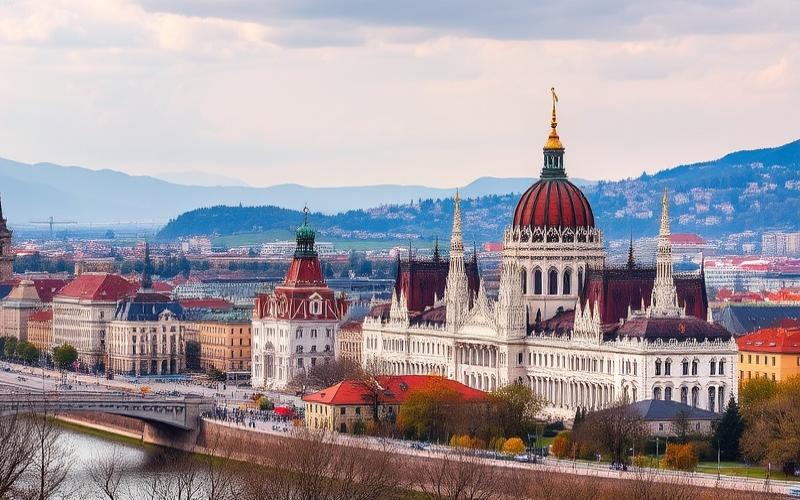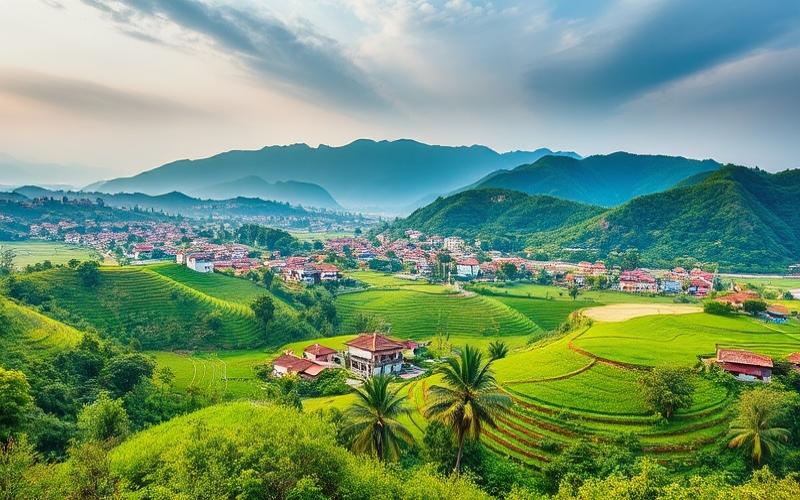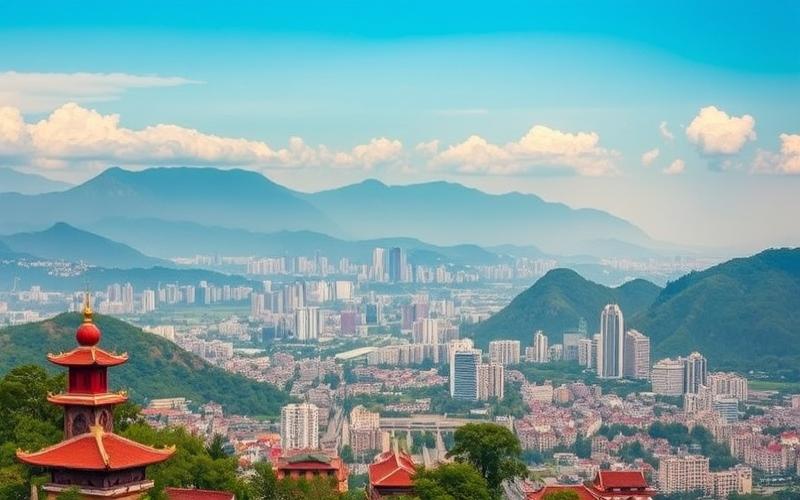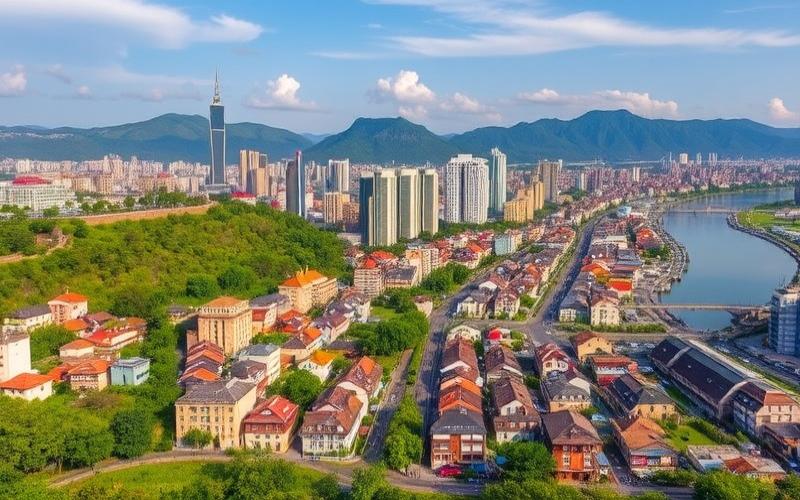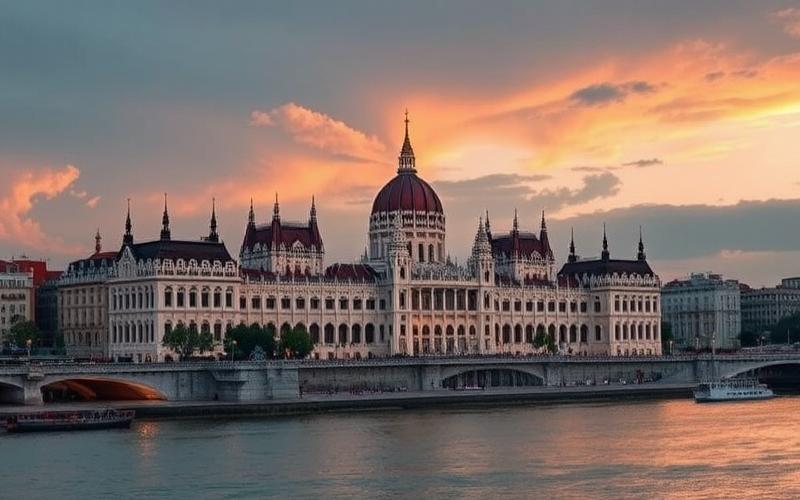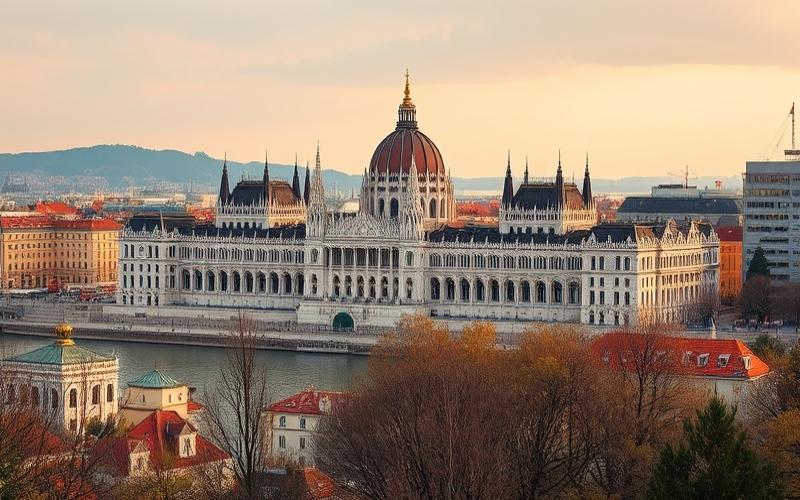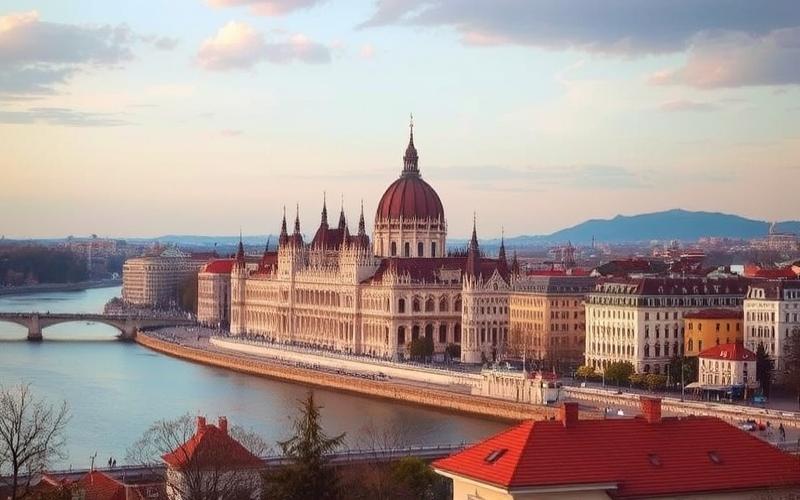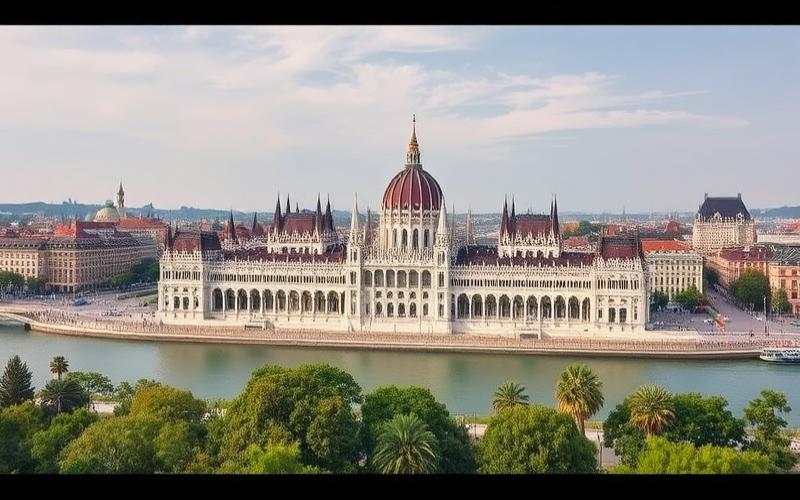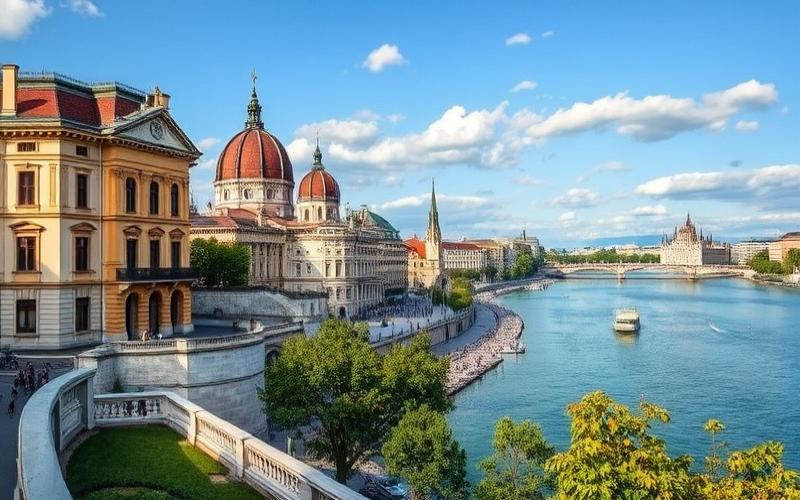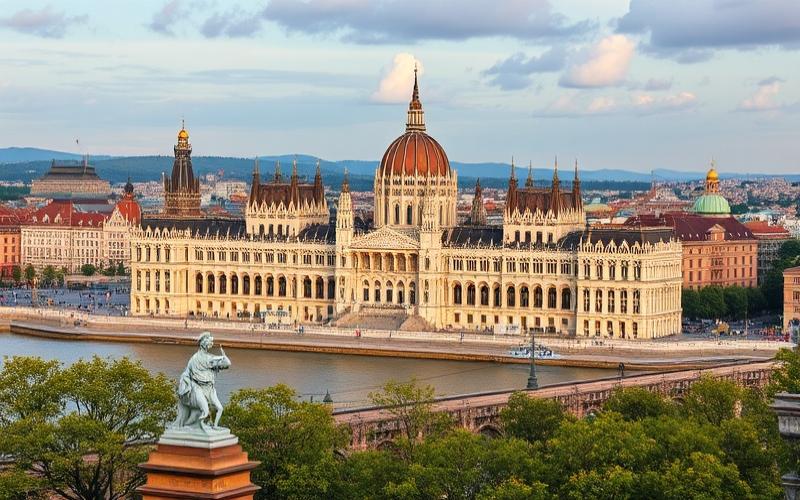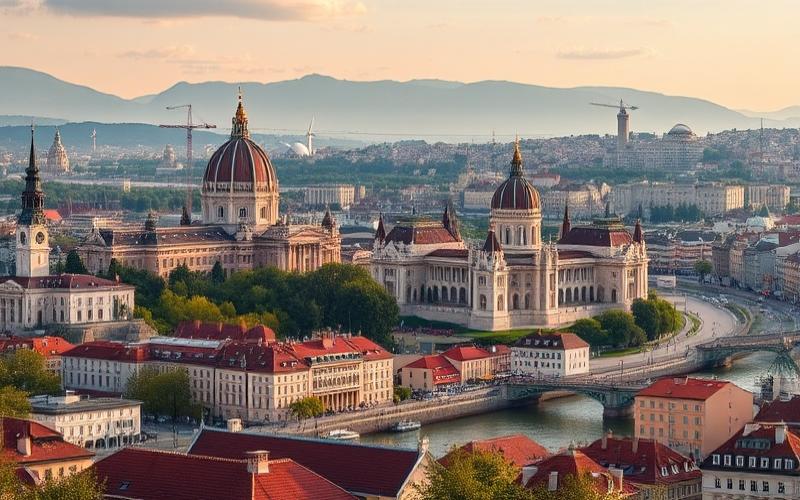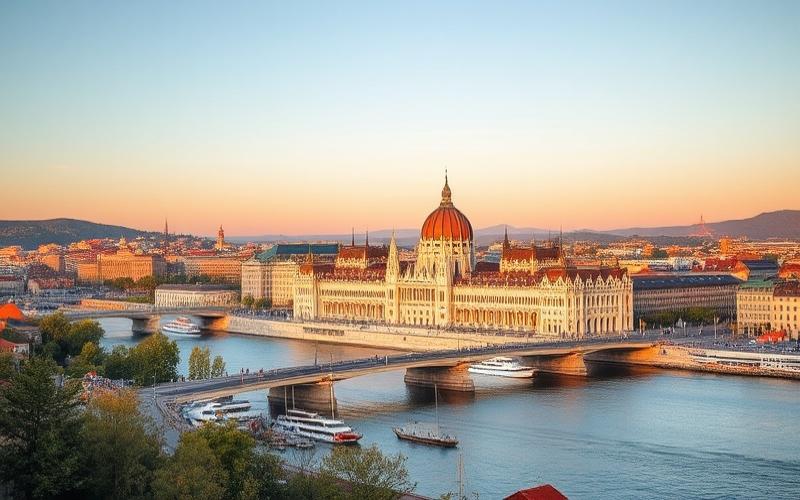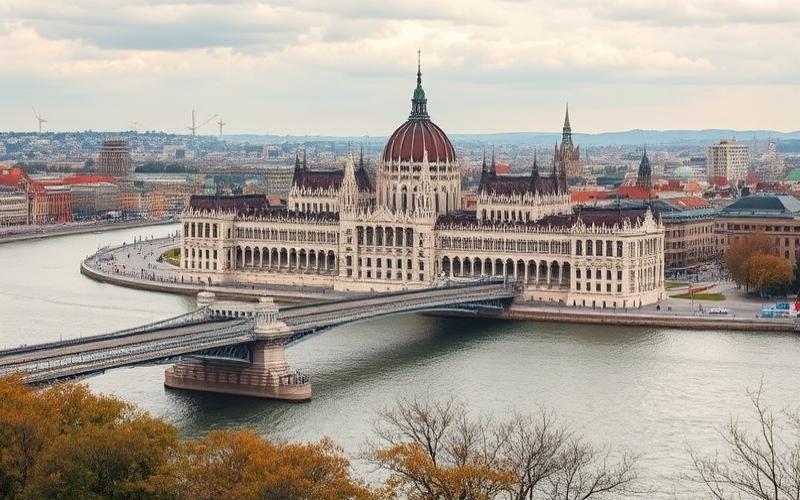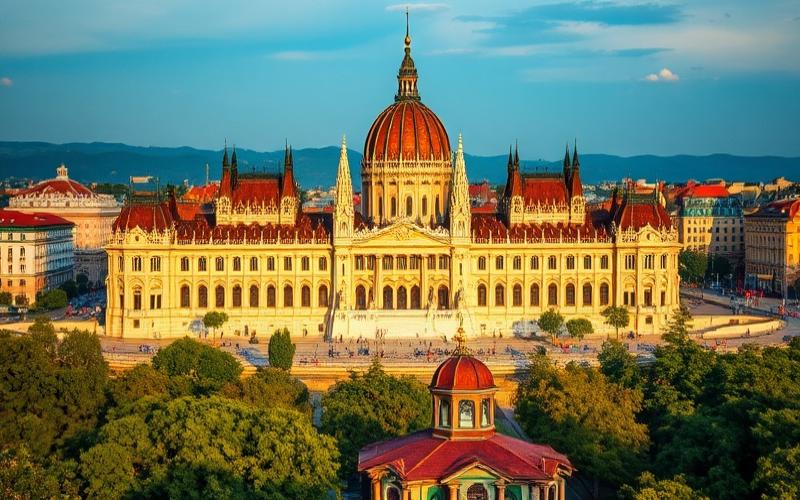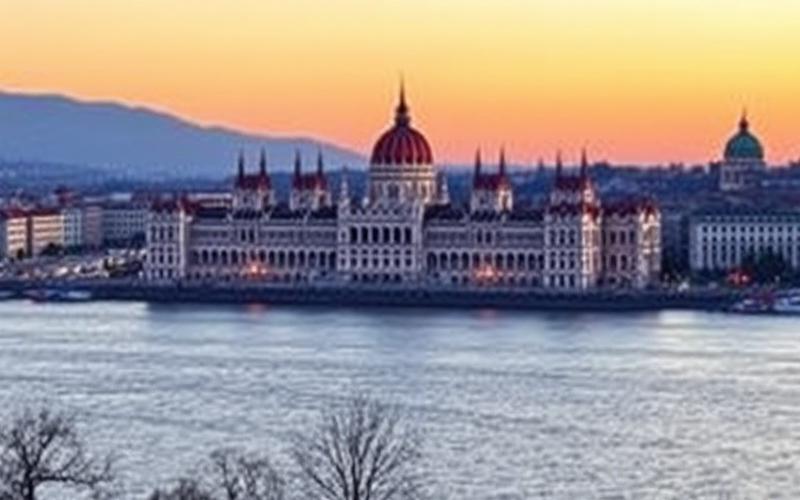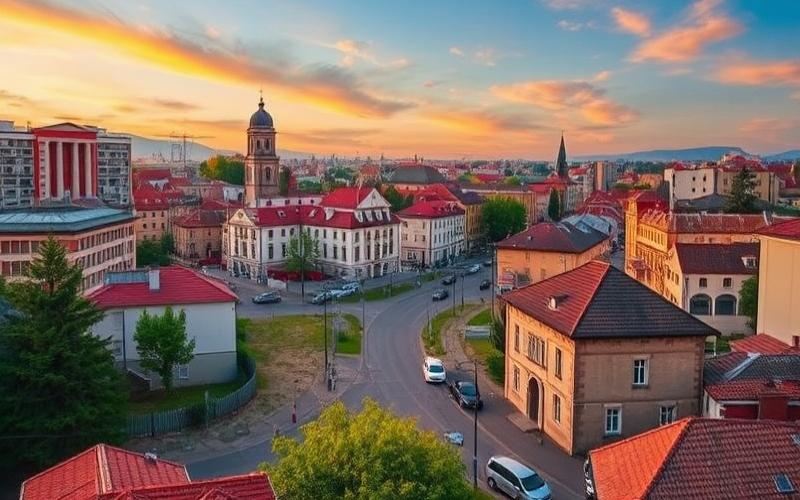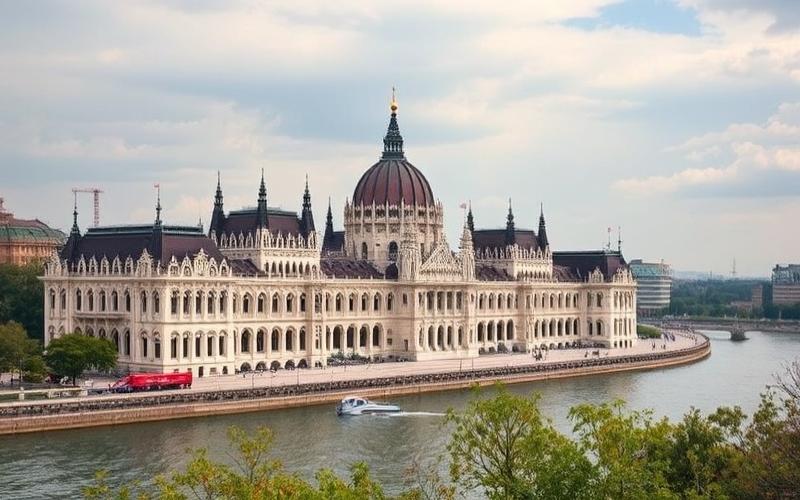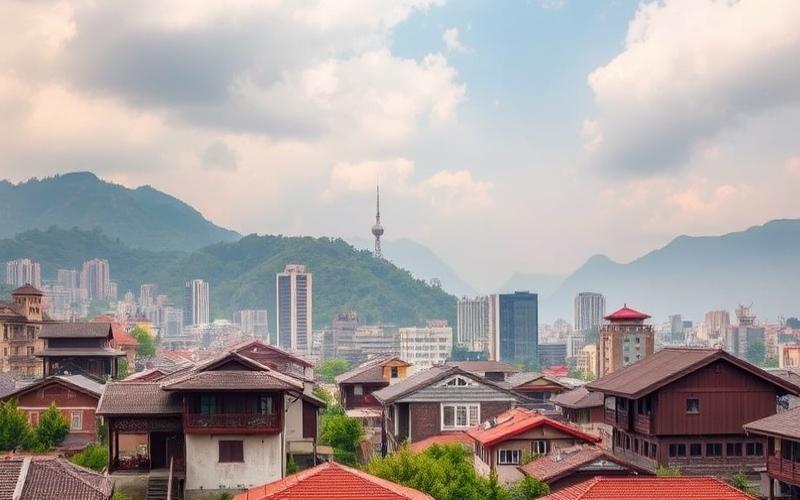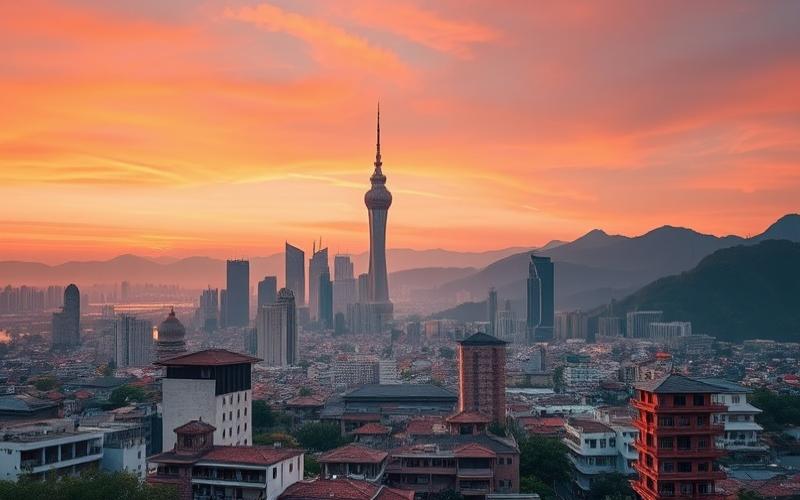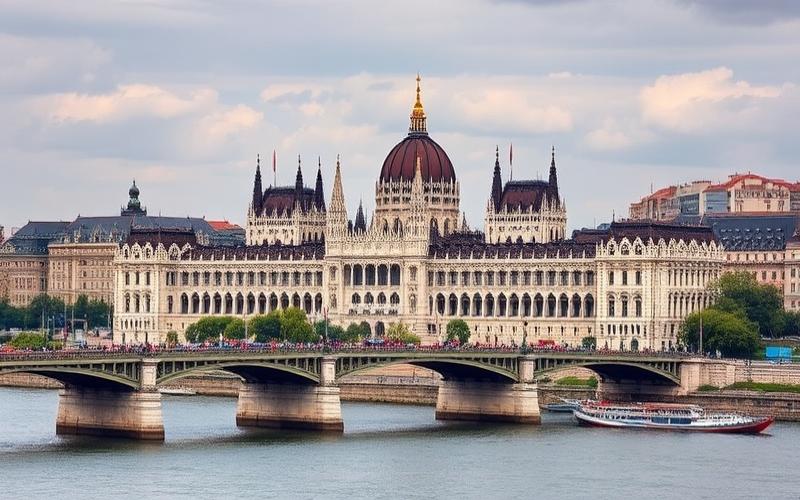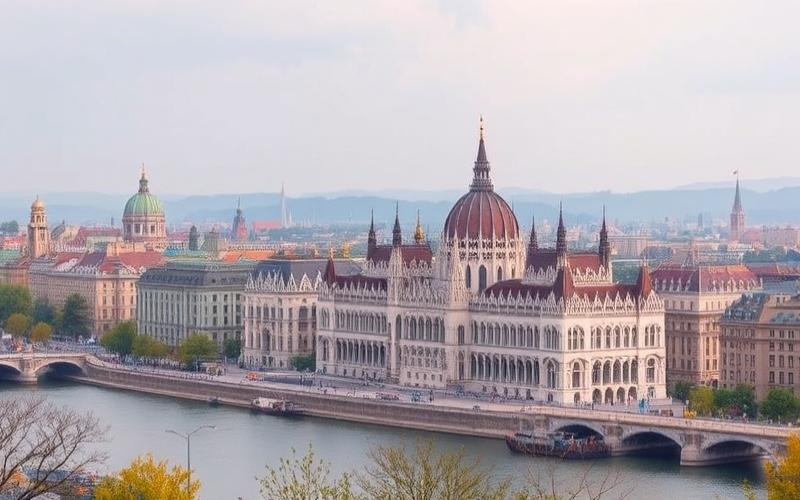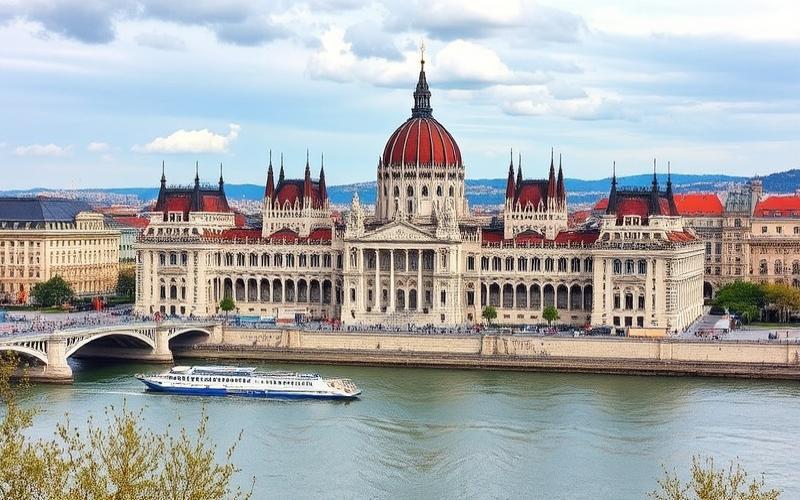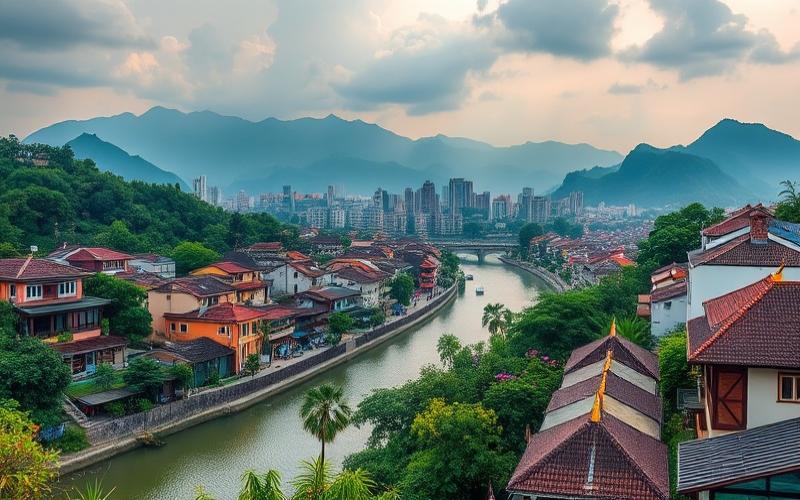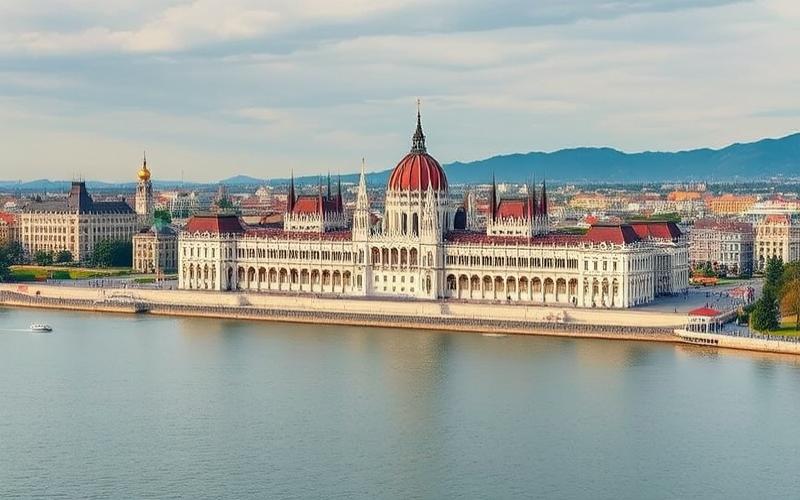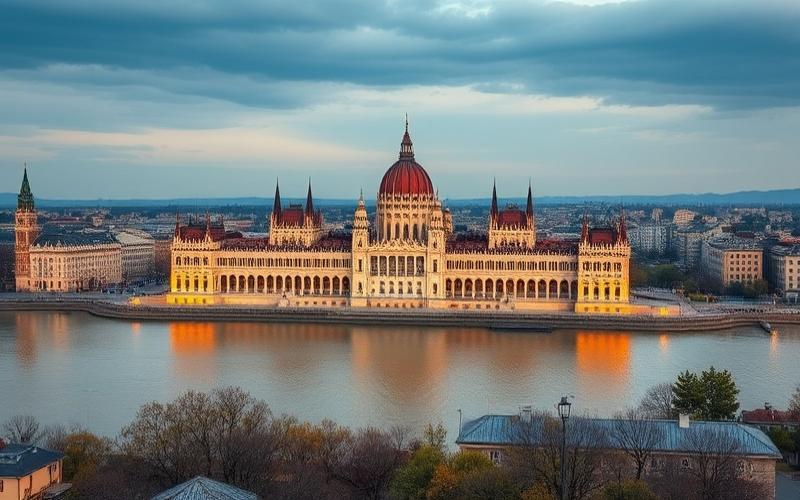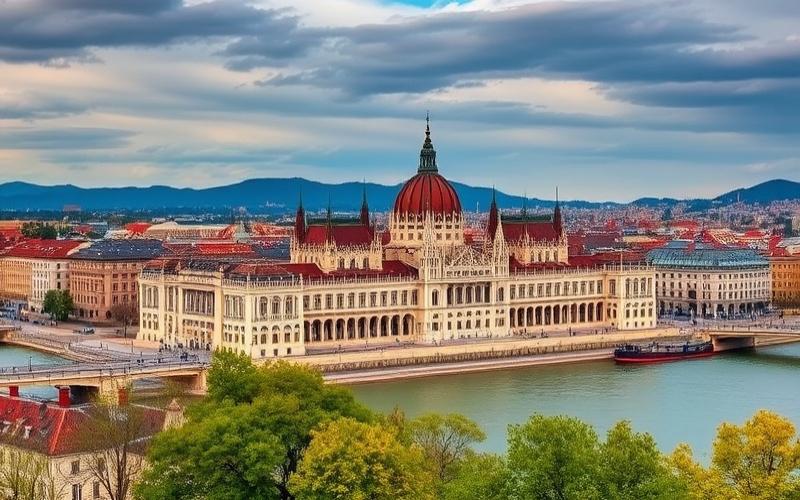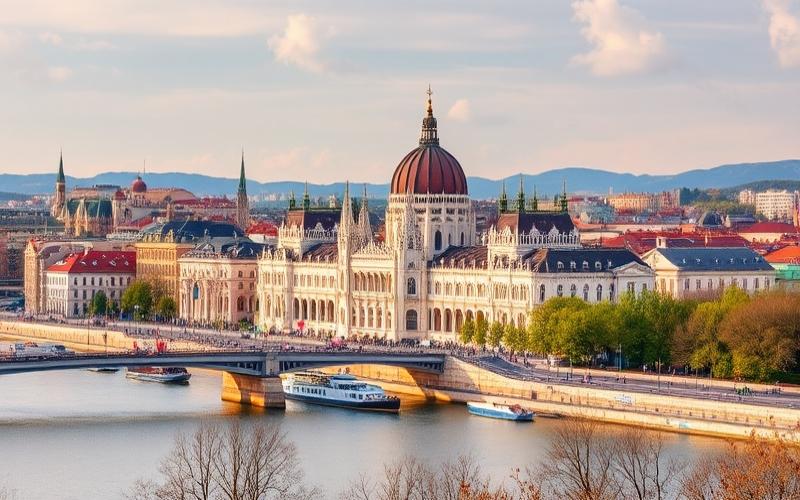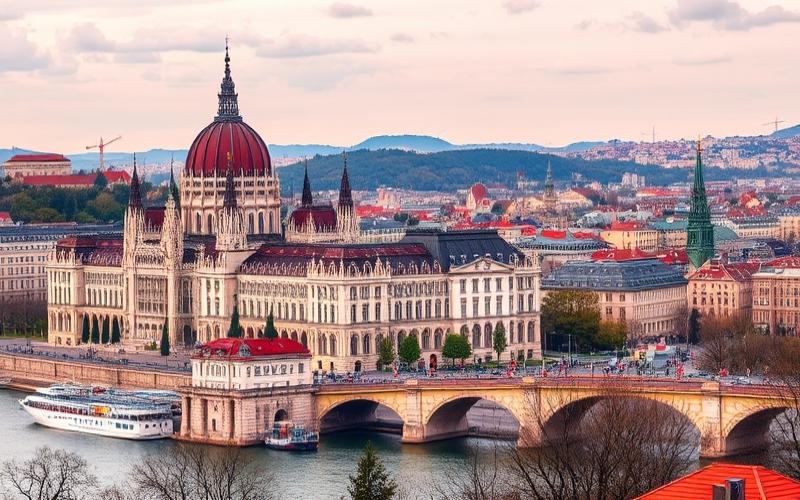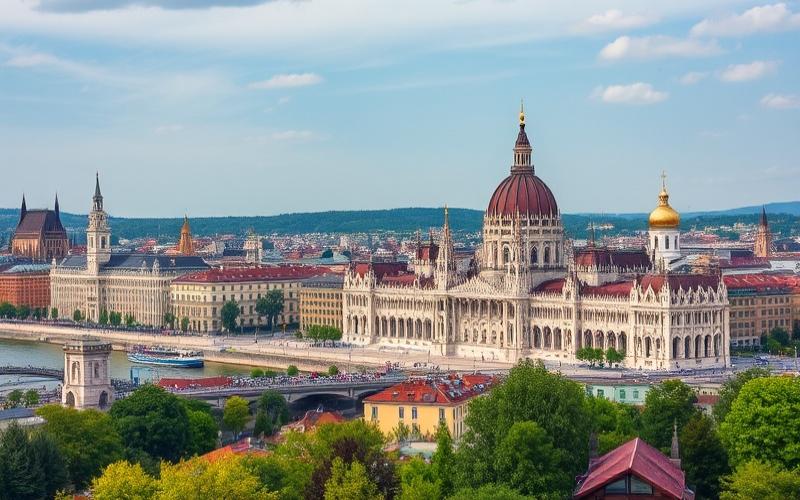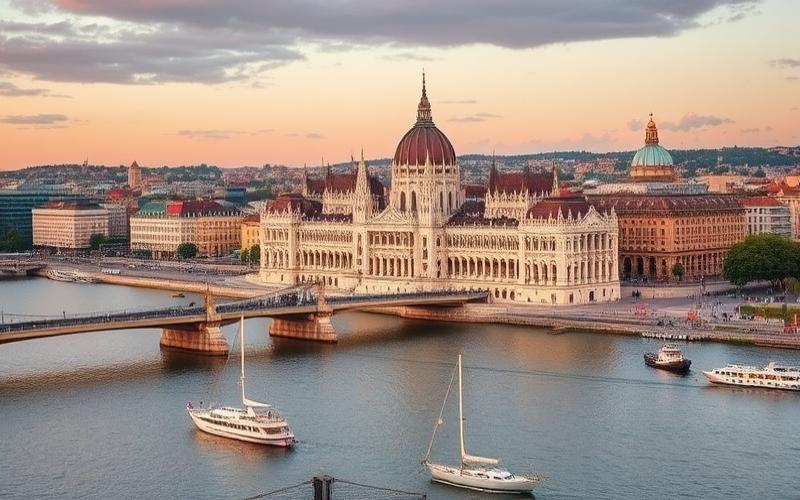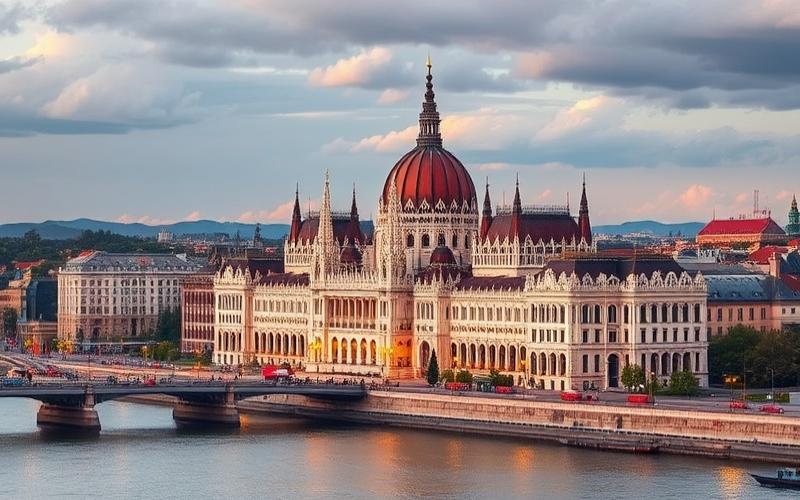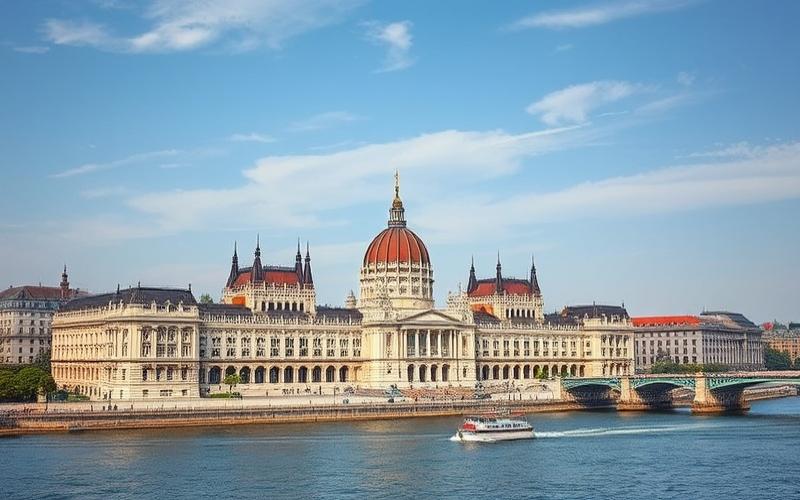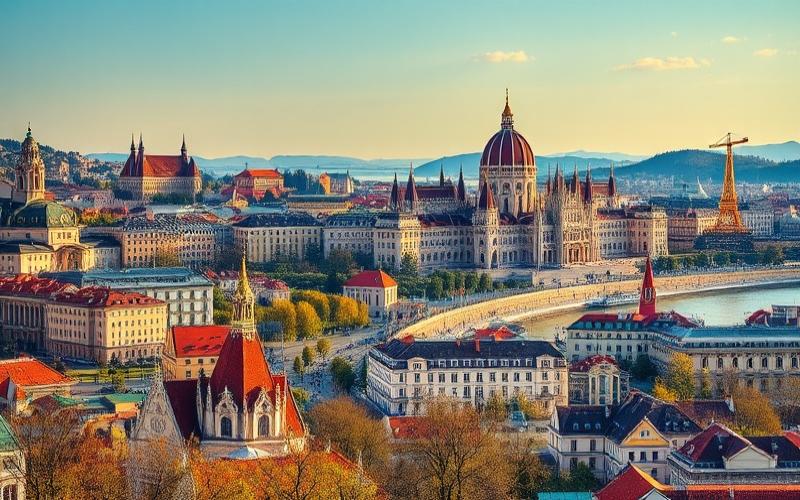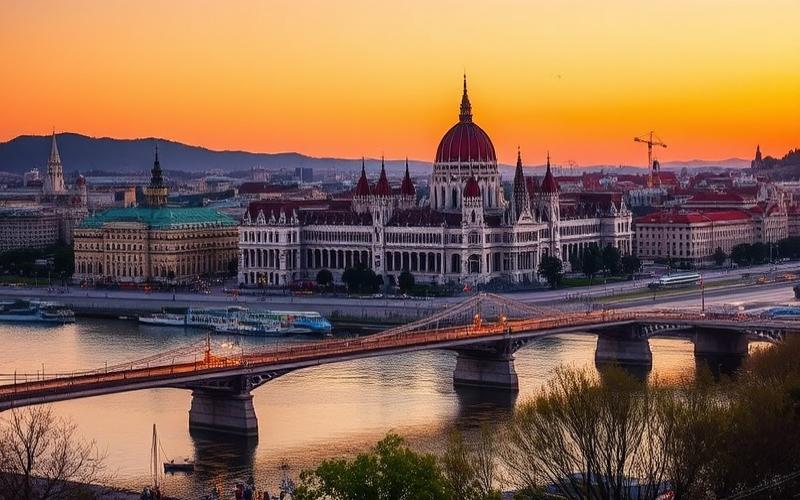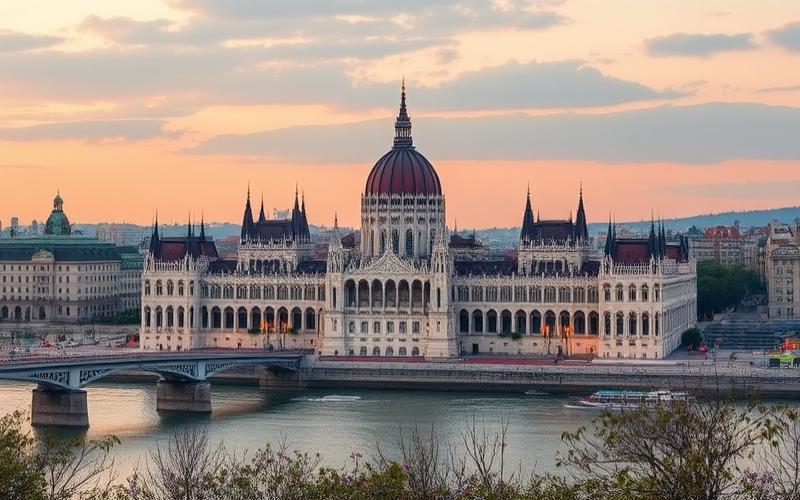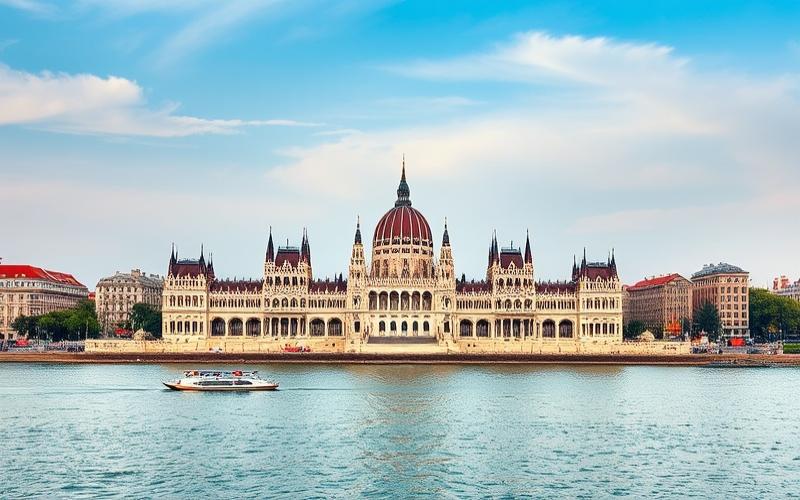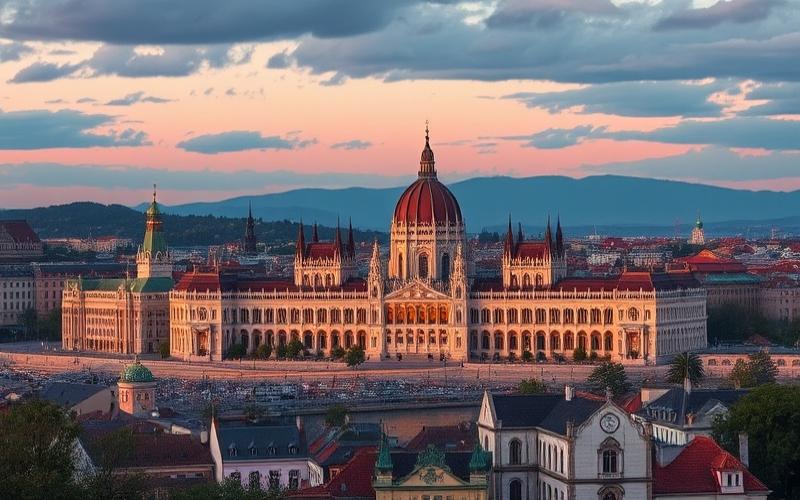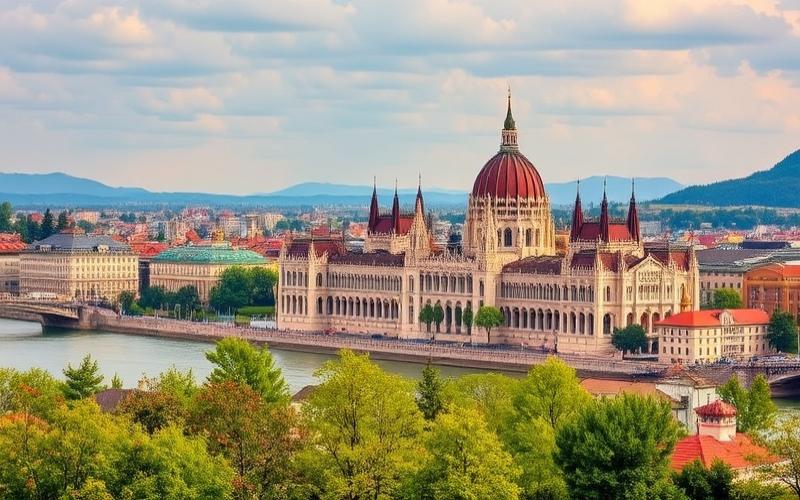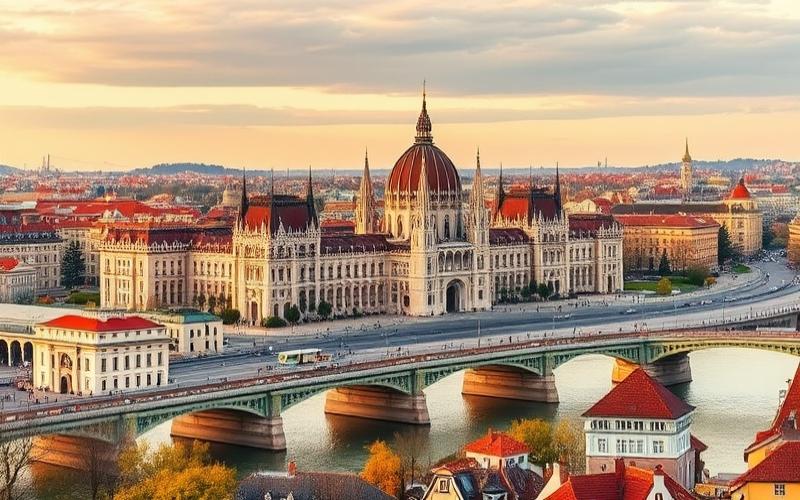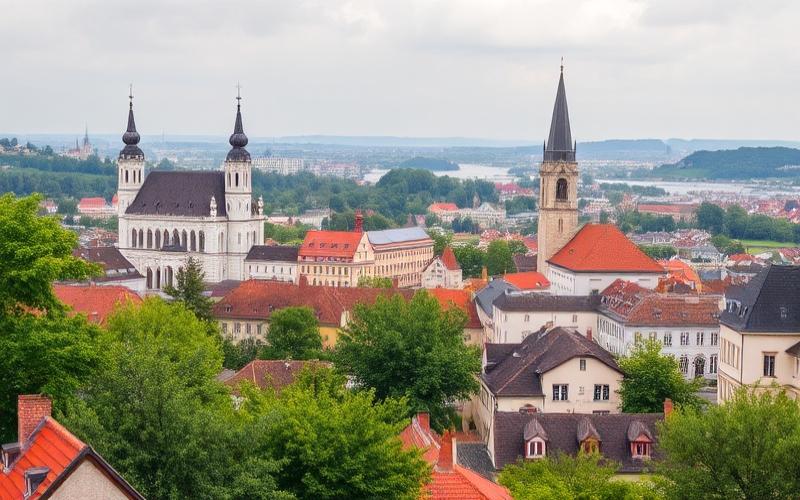
 Published on and written by Cyril Jarnias
Published on and written by Cyril Jarnias
In the picturesque heart of Hungary, unique communities spring forth like a vibrant creative breath: artist villages. These cultural enclaves, often nestled in bucolic settings, offer an inspiring refuge for creators from all walks of life, imbuing these places with an aura of authenticity and renewal.
Behind these picturesque facades lies a complex and intriguing question that fuels discussions and debates among heritage promoters and inheritors: do these villages constitute a sustainable cultural investment or merely an economically profitable enterprise?
Far from being mere tourist stops, they represent a dynamic where art, economy, and cultural heritage meet and clash, transforming these villages into a true mirror of contemporary cultural management challenges.
The Renaissance of Hungarian Artist Farms
Hungarian artist farms trace their origins to the country’s rural and artisanal traditions, where folk art developed since the arrival of the Magyars around 895 AD, particularly through embroidery, woodworking, and furniture decoration. Over the centuries, these forms of expression evolved alongside Hungary’s political and cultural history, with a strong national identity reinforced by characteristic ornamental motifs.
Their modern development was influenced by several contexts:
- Austro-Hungarian Period (19th – early 20th century): economic boom and artistic opening to Western Europe; search for a national identity within a multicultural framework.
- Socialist Era (1945-1989): artistic experimentation under political control but also maintenance of certain traditional practices in rural areas.
- Post-socialist Transition: rediscovery of rural heritage and valorization of local know-how.
The contemporary renaissance of artist farms rests on several economic and cultural factors:
- Agricultural decline prompting necessary conversion of rural operations.
- Growing interest in authentic cultural tourism.
- Government support through intangible heritage grants (example: UNESCO inscription of practices like táncház or Matyó embroidery).
- Local initiatives aimed at creating attractive hubs outside major cities.
Notable Examples
| Artist Farm | Location | Main Activities | Hungarian Tradition Integration |
|---|---|---|---|
| Matyó Farm | Northeast | Embroidery workshops, exhibitions | UNESCO-listed embroidery |
| Táncház Szeged | South | Folk dance/music workshops | Táncház Method |
| Busó Farm Mohács | Southwest | Mask/costume making; carnivals | Busó Festivities |
At these farms:
- You’ll find artist residencies, workshops open to the public, intergenerational workshops around textiles or carved wood.
- Traditions are passed on during seasonal festivals or open house days blending contemporary creation and ancestral know-how.
The Local Impact is Multiple:
Job Creation
- Cultural facilitators
- Artisan-trainers
- Tourism staff
Tourist Attractiveness
- Welcoming foreign visitors curious about authentic folklore
- Alternative accommodations for rural immersion
Cultural Dynamism
- Strengthened sense of identity
- Platforms for young creators
- School/association partnerships
Regarding their nature – cultural investment vs. economic opportunity – it’s important to distinguish:
Artist farms primarily embody a sustainable cultural investment, as they preserve threatened folk arts while promoting their transmission to new generations. However, their viability often relies on a mixed logic where economic profitability (rural tourism) supports cultural goals.
In short, although some operations see this renaissance as an important commercial lever thanks to growing demand for experiential tourism, it’s mainly their ability to regenerate the local social fabric that finds consensus among institutional and associative actors alike.
Good to Know:
Hungarian artist farms, whose origins date back to the 19th century when artists sought inspiring retreats away from cities, are experiencing a renaissance thanks to government cultural support policies and dedicated local initiatives. These farms, once abandoned, are transforming into dynamic cultural centers, integrating visual arts, music, and traditional crafts, while showcasing Hungary’s unique rural heritage. Successful examples include the Kapolcs farm and the one in Taliándörögd, where annual festivals attract thousands of visitors, creating local jobs and establishing new tourist infrastructure. Although these farms are often seen as sustainable cultural projects, their success has also demonstrated substantial economic opportunities, raising questions about the balance between profitability and cultural preservation.
Artistic Communities and Real Estate Investment in Hungary
Artistic communities in Hungary play a key role in transforming local real estate markets, particularly in the villages where they settle. Their presence acts as an economic and social catalyst, attracting investors and new residents.
Direct Effects on the Real Estate Market:
- Increased demand for housing, workshops, and cultural spaces.
- Valorization of built heritage: rehabilitation of old houses or farms transformed into galleries, workshops, or artist residences.
- Rising real estate prices due to cultural attractiveness and tourism related to artistic activities.
Contributions to Local Economic Growth:
- Creation of indirect jobs (restaurants, tourist accommodation, local crafts).
- Development of complementary services (literary cafes, independent bookstores).
- Regular organization of cultural events that generate increased village attendance.
Notable Examples of Villages Impacted by Artist Settlements:
| Hungarian Village | Observed Impact | Associated Initiatives |
|---|---|---|
| Szentendre | Sharp rise in property values | Private museums & galleries |
| Zebegény | Enhanced tourist attractiveness | Annual festivals & exhibitions |
| Kapolcs | Architectural renewal | Művészetek Völgye Festival |
Public Policies and Government Incentives:
Main identified levers:
- Grants for restoring historical buildings used for cultural purposes.
- Occasional tax exemptions for investments in the cultural or artistic sector.
- Local aid aimed at facilitating the creation of artist residences or creative collectives.
Potential obstacles:
– Sometimes absence of a structured national regulatory framework specifically for these dynamics; support often depends on local activism rather than a coherent national policy.
Criticisms Regarding Potential Negative Effects:
Major risks mentioned:
- Gentrification:
- Rapid rent increases excluding some traditional residents.
- Modification of the village’s social fabric in favor of a wealthier or international population.
- Cultural Uniformization:
- Risk of partial loss of authentic character if development is not managed.
- Pressure on Infrastructure:
- Possible saturation during major festivals; increased needs for transport and temporary accommodation.
Summary List of Benefits & Drawbacks
Advantages:
- Economic renewal
- Architectural valorization
- Regional cultural influence
Disadvantages:
- Local gentrification
- Risk of cultural standardization
- Pressure on communal resources
Examples such as Szentendre illustrate how a dynamic artistic community can transform not only the real estate landscape but also the local economy while raising certain social issues related to this rapid development.
Good to Know:
In Hungary, artistic communities energize the local real estate market, attracting investors where they establish themselves, particularly in villages such as Szentendre or Hollókő. Thanks to the enriching presence of artists, these villages experience not only cultural rehabilitation but also an increase in property values. Government policies play a dual role here, sometimes encouraging these investments through cultural grants or inspired urban planning programs such as making these areas tourist destinations. However, these changes bring challenges, including gentrification, which can make the cost of living prohibitive for original residents, creating a delicate balance between economic revitalization and preservation of social equity.
Creative Eco-Villages: A Model of Sustainability and Innovation
Creative eco-villages in Hungary embody a unique synergy between environmental sustainability and artistic innovation, acting both as guardians of nature and incubators of art.
Contributions to Environmental Preservation:
- Adoption of permaculture principles to restore soils, preserve water, promote biodiversity, and limit ecological footprint.
- Construction of ecological habitats using natural materials (ban on fiber cement or asbestos), integration with local architectural styles, and energy production via solar panels.
- Promotion of organic agriculture (fruits, vegetables, free-range livestock) enabling food self-sufficiency while reducing transportation.
- National pilot projects to combat climate change: innovative hydraulic developments, sustainable pasture management, and active conservation of rural landscapes.
Artistic & Creative Catalysts:
- Hosting members from diverse backgrounds (scientists, jugglers, economists…), fostering strong interdisciplinarity.
- Spaces dedicated to creation: multipurpose rooms for performances or local craft workshops. Regular organization of cultural events open to the public.
- Valorization of Hungarian intangible heritage through revisited traditional practices (folk music, vernacular architecture).
| Eco-Village | Environmental Specifics | Artistic Innovation |
|---|---|---|
| Nyim | Permaculture on 26 ha; micro-eco-enterprises; restoration of traditional village | Collective workshops; professional diversity; local festivities |
| Gyűrűfű | Exclusive organic agriculture; strict natural resource management; habitat integrated into landscape | Community open to varied artistic profiles; creative renovation |
| Krishna-Valley | Food self-sufficiency; very low ecological footprint; traditional technology experimentation | Living presentation of traditional rural lifestyle; community cultural events |
Hungarian Specifics Compared to Other Global Models:
- Emphasis on maintaining local architectural style in every new construction or renovation.
- Inclusive collective process in recruitment and social integration (trial period before definitive membership).
- Strong municipal involvement with institutional support to sustainably transform villages threatened by depopulation.
Necessary Investments & Financial Potential:
Required Investments:
- Collective purchase of land/old houses
- Ecological developments (shared gardens, renewable energy infrastructure)
- Logistical support for micro-eco-enterprises
Financial Potential:
Projects are often motivated by a cultural/artistic vision but also present economic potential through:
- Green agritourism
- Local artisanal development
- Direct sale of organic products
Profitability strongly depends on:
- The ability to attract tourists & new residents sensitive to these values
- Internal entrepreneurial dynamism
In several Hungarian cases like Nyim or Krishna-Valley, these initiatives remain primarily cultural, seeking mainly to revitalize an authentic rural lifestyle rather than maximizing financial profit. However, their model is gradually inspiring broader public policies.
Impact on Local Communities & Cultural Heritage:
- Gradual repopulation of deserted villages
- Strengthening of social fabric around common sustainable goals
- Valued intergenerational transmission through educational workshops and cultural festivals
Hungarian creative eco-villages illustrate how to reconcile deep respect for the environment with local artistic effervescence—thus offering an inspiring model where living cultural heritage rhymes with ecological innovation.
Good to Know:
Creative eco-villages in Hungary, such as Visnyeszéplak and Gyűrűfű, illustrate a unique fusion between environmental sustainability and artistic innovation, showcasing ecological habitats designed to reduce carbon footprint while providing inspiring spaces for artists. Unlike other sustainable development models, these Hungarian villages stand out for their harmonious integration of eco-friendly practices, like using natural materials and producing renewable energy, thereby supporting local biodiversity. Initial investments, often from cultural grants and public-private partnerships, enable the creation of sustainable and innovative infrastructure that serves as springboards for artistic creativity. While these initiatives are clearly motivated by a desire for cultural enrichment, they also offer attractive economic opportunities, fostering eco-cultural tourism and local green entrepreneurship. By thus combining environmental preservation and cultural dynamics, Hungarian eco-villages contribute significantly to conserving cultural heritage while stimulating the local economy.
Art and Economy: A Prolific Marriage in Hungarian Villages
The interaction between art and economy in Hungarian villages manifests through the creation of economic initiatives aimed at supporting local artists and energizing the village economy. These initiatives rely on structures such as festivals, galleries, and museums, which play a determining role in valorizing local cultural resources and boosting tourism.
Economic Initiatives Serving Local Artists:
- Creation of permanent or seasonal craft markets, promoting direct sales of works and encounters between artists and visitors.
- Establishment of artist cooperatives or associations to pool resources, organize workshops, and develop collective promotion strategies.
- Artist residency programs, offering local creators workspace, increased visibility, and collaboration opportunities.
- Institutional support through public grants or partnerships with local businesses, which invest in artistic production and dissemination.
Local and National Economic Effects:
- Revenue generation for residents through visitor hosting, sale of works and derivative products, and growth in tourist accommodation.
- Diversification of the rural economic fabric, helping to limit youth exodus and offer alternatives to traditional agriculture or crafts.
- Strengthening village attractiveness, which can lead to increased private and public investment in local infrastructure.
Role of Galleries, Museums, and Festivals:
| Structure | Direct Economic Impact | Impact on Tourism and Culture |
|---|---|---|
| Galleries | Sale of works, event organization, space rental | Artist networking, attractiveness for art enthusiasts |
| Museums | Ticket sales, workshops, temporary exhibitions | Valorization of local heritage, artistic education |
| Festivals | Creation of temporary jobs, increased local consumption | National/international influence, massive influx of visitors |
Concrete Example: The Valley of Arts
Each summer, the Valley of Arts brings together several villages near Lake Balaton and offers over 2000 cultural events over ten days, blending exhibitions, participatory workshops, concerts, and performances. The festival attracts thousands of visitors, energizes the local economy (restaurants, accommodation, transport), and offers exceptional visibility to local artists. Generated profits are reinvested in organizing the next edition, ensuring project sustainability and a virtuous circle for the local economy.
Benefits for Local Communities:
- Cultural enrichment and facilitated access to varied art forms.
- Creation of a sense of belonging and local pride.
- Improved quality of life through revitalization of public spaces and infrastructure.
- Strengthened social and intergenerational ties through community participation.
⧉ Hungarian villages that bet on art and culture as an economic engine observe positive outcomes both economically and socially, transforming artistic initiatives into true levers of local and national development. ⧉
Good to Know:
In Hungary, the interaction between art and economy in villages like Hollókő or Szentendre illustrates a prolific marriage, opening new economic and cultural horizons. These villages attract tourists and art lovers through local galleries, museums, and festivals that not only promote artistic heritage but also stimulate the local economy. Initiatives like artist residencies and craft markets provide sustainable support to local creators, enabling a stable income source and the creation of indirect jobs in the hospitality or restaurant sectors. Cultural enrichment goes hand in hand with a positive economic impact, transforming rural areas into truly dynamic economic hubs internationally recognized, also contributing to a significant increase in tourism in these regions.
Disclaimer: The information provided on this website is for informational purposes only and does not constitute financial, legal, or professional advice. We encourage you to consult qualified experts before making any investment, real estate, or expatriation decisions. Although we strive to maintain up-to-date and accurate information, we do not guarantee the completeness, accuracy, or timeliness of the proposed content. As investment and expatriation involve risks, we disclaim any liability for potential losses or damages arising from the use of this site. Your use of this site confirms your acceptance of these terms and your understanding of the associated risks.

